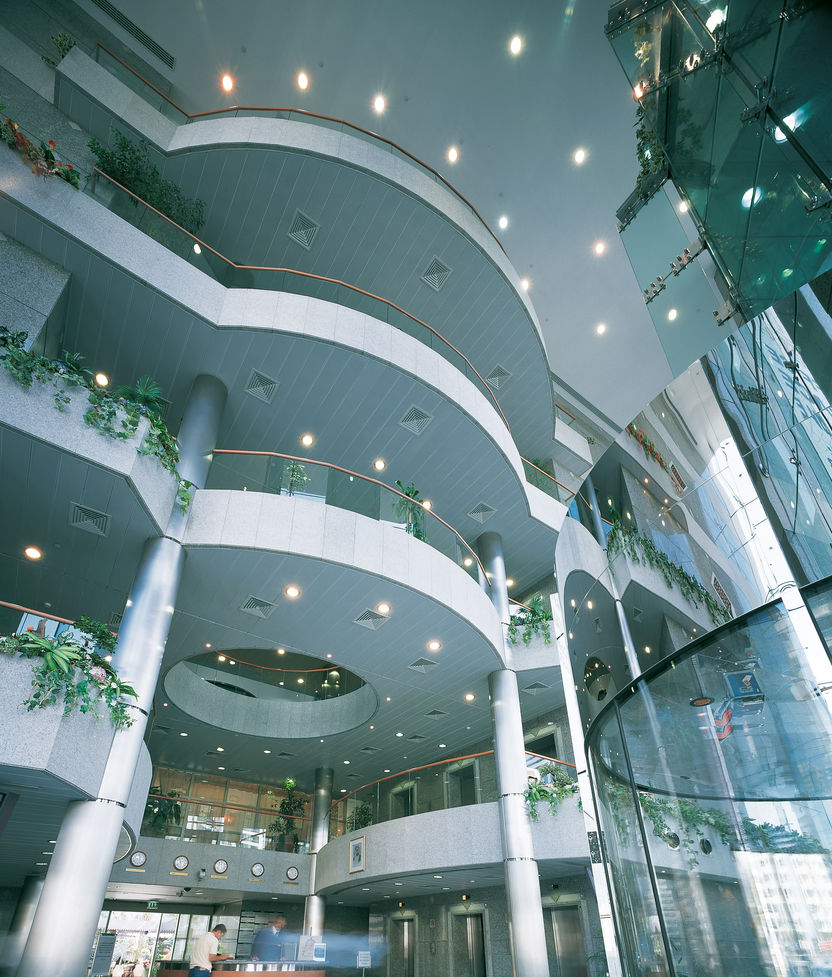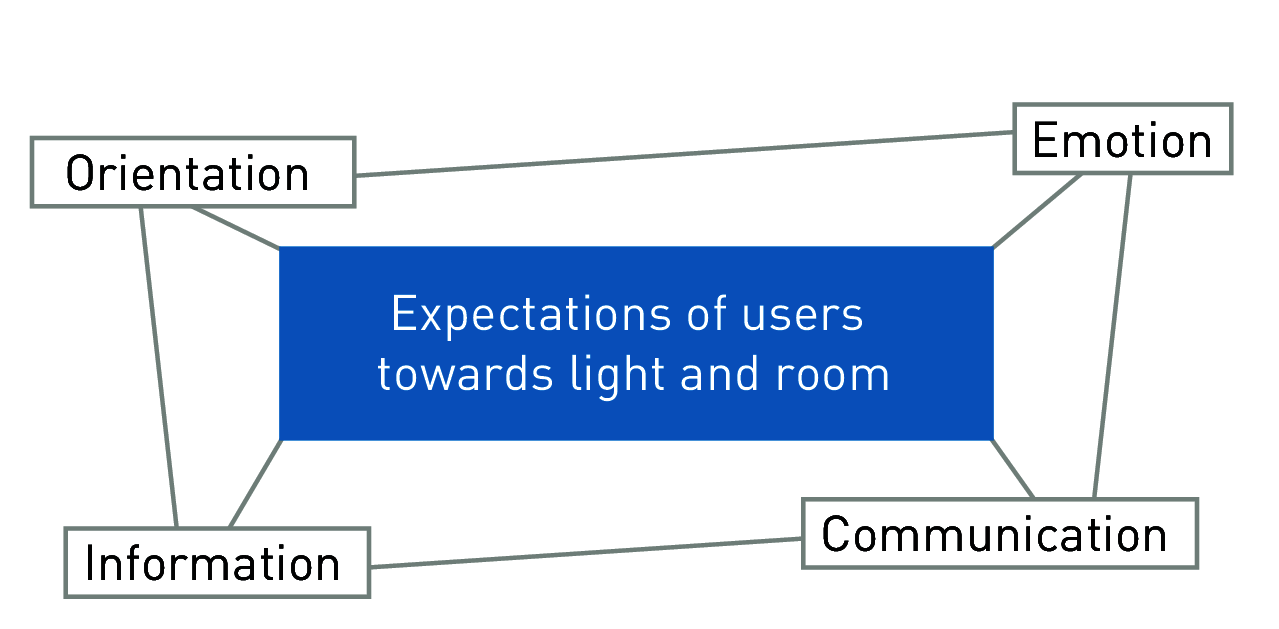
Need for orientation

Research has shown that lighting installations equipped according to all standardised quality criteria do not always yield top marks in terms of acceptance.As user surveys have shown, standard-compliant lighting installations are not always a guarantee for good lighting.
This poses the question of actual quality of lighting with regard to the criterion of room and lighting acceptance. Important aspects in this respect are orientation within the room as well as individually perceived interaction – communication in terms of perception psychology – with the room.
Perception psychology teaches us that photometric parameters of physically and physiologically oriented lighting technology – without regard to human emotion towards the room, its purpose and equipment – can only offer an incomplete characterisation of well-being. A lighting design focused solely on the visual task reduces the required evaluation scale to physical and physiological parameters, and only to a minor extent to psychological ones.
The experience of Lighting designers in not only planning and calculating the lighting, but also to design it within the context of the room, extends the criteria of "good lighting". William Lam, an American lighting designer and author of two ground-breaking books on light design ("Perception and lighting as formgivers for architecture" [193] and "Sunlighting as formgiver for architecture" [194]), distinguished the following criteria in the 1970s:
Functional criteria (activity needs) and
aesthetic criteria (architectural needs) delineate the aforementioned visual needs.
Emotional criteria (biological needs), describe the psychological, mostly subconscious and emotional effects of lighting. The clarity of the room, e.g. room shapes clearly structured by light, the intelligibility of the room without misleading shadows, a clear arrangement of the room situation e.g. through clear orientation via paths, exits and furniture add up to form the individual evaluation regarding well-being in the room.
While functional criteria only take full effect during times of peak visual concentration, the visual attention is mostly geared to observation and perception of the surroundings. Changes are instantly perceived, reactions follow immediately. The exchange of information with the environment, meaning the communication with the room, the people and events, is substantially determined by the lighting. Confusing, not easily recognisable changes in the surrounding area which are not clearly structured may cause discomfort. Example: Light-flooded airports can lead to disorientation. Over-communication is also perceived as irritating. A certain privacy, which can be supported by islands of light, encourages a positive evaluation of room and lighting.
We perceive rooms only through light. Space and light are intrinsically tied to each other. Conventional lighting technology describes light with regard to the visual task, mostly ignoring the room. Good lighting installations hence are not merely limited to the fulfilment of physiological visual tasks, but they also create an environment where the user feels comfortable, while performing the tasks the room was conceived for: festive, intimate, cosy, valuable, factual.
Another lighting design concept in the same vein is based on human needs, expectation and wishes. The following considerations are vital to that effect:
the lighting must facilitate spatial and temporal orientation in the room. Culture, societal conditions and education of the user are significant influencing factors when it comes to expectation and evaluation. These are determined by functionality, aesthetics, ergonomics and lighting of the room and its equipment (e.g. furniture). Contact with daylight supports orientation, e.g. regarding the outside world and the weather.
Rooms must facilitate unhindered communication with other people, the room and the outside world, which necessitates contact with daylight. It must also be possible to disconnect from overwhelming visual communication effects, e.g. in order to focus on difficult tasks or thought processes. Privacy instead of collectivism in the work place can become a significant motivating factor for many.
Room and lighting must be designed in a way that facilitates a good overview of the outside world, the room, entrances and exits as well as the activities of others. Information and education create familiarity. Representation, preservation of self-esteem and motivation are significantly supported by suitably designed rooms.
Rooms must offer variety, emotion and maybe even surprise instead of monotony through their lighting.

Figure 3.2: Expectations of users regarding high acceptance of room and light